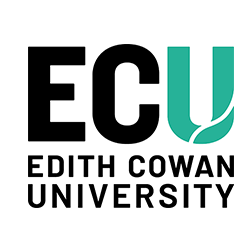Author Identifier (ORCID)
Angela C. Uphill: https://orcid.org/0000-0002-8909-7392
Kristina L. Kendall: https://orcid.org/0000-0001-6872-7335
Stuart N. Guppy: https://orcid.org/0000-0001-9209-7409
G. Gregory Haff: https://orcid.org/0000-0002-0676-7750
Abstract
This study aimed to determine the energy requirements, physiological consequences, and recovery rate from the Australian Special Forces Selection Course. Ninety-three male soldiers (mean ± SD, 28.1 ± 3.6 years, 1.81 ± 0.1 m, 85.1 ± 8.1 kg) vol-unteered for this study. Body composition via dual-energy X-ray absorptiometry, hormones and resting metabolic rate were assessed before, immediately after, and at 1, 3, 5, and 8 weeks post-course. Energy expenditure, assessed via doubly-labelled water during the first 10 days of the course significantly exceeded energy intake (expenditure: 7680 ± 1095 kcal. day–1, in-take: 3859 ± 704 kcal. day– 1). Body mass (Δ–6.8 ± 1.9 kg, p < 0.01), fat mass (Δ –4.2 ± 1.0 kg, p < 0.0001) and lean mass (Δ–3.0 ± 1.7 kg, p < 0.0001) were significantly reduced in response to the course and returned to baseline 1–3 weeks post-course. Total testosterone, free testosterone, free triiodothyronine, free thyroxine and insulin like growth factor-1 significantly (p < 0.001) declined following the course, while cortisol and sex hormone binding globulin increased (p < 0.001). All hormones, except insulin like growth factor-1, returned to baseline concentrations within 1–3 weeks post-course. Resting metabolic rate decreased (p < 0.01) in response to the course, and subsequently rebounded above baseline levels at 1 week post-course. The Special Forces Selection Course involved high energy output and a substantial caloric deficit, resulting in body mass loss and significant hormonal disruption that took weeks to recover. These results highlight the energy requirements, physiological consequences, and recovery processes from the Australian Special Forces Selection Course.
Document Type
Journal Article
Date of Publication
1-1-2025
Volume
50
PubMed ID
39197174
Publication Title
Applied Physiology, Nutrition and Metabolism
Publisher
Canadian Science Publishing
School
School of Medical and Health Sciences
RAS ID
76845
Funders
Defence Science Center (G1005184) / Australian Army Headquarters
Creative Commons License

This work is licensed under a Creative Commons Attribution 4.0 License.


Comments
Uphill, A. C., Kendall, K. L., Baker, B. A., Guppy, S. N., Brown, H. M., Vacher, M., ... & Haff, G. G. (2024). The physiological consequences of and recovery following the Australian Special Forces Selection Course. Applied Physiology, Nutrition, and Metabolism, 50, 1-13. https://doi.org/10.1139/apnm-2024-0117